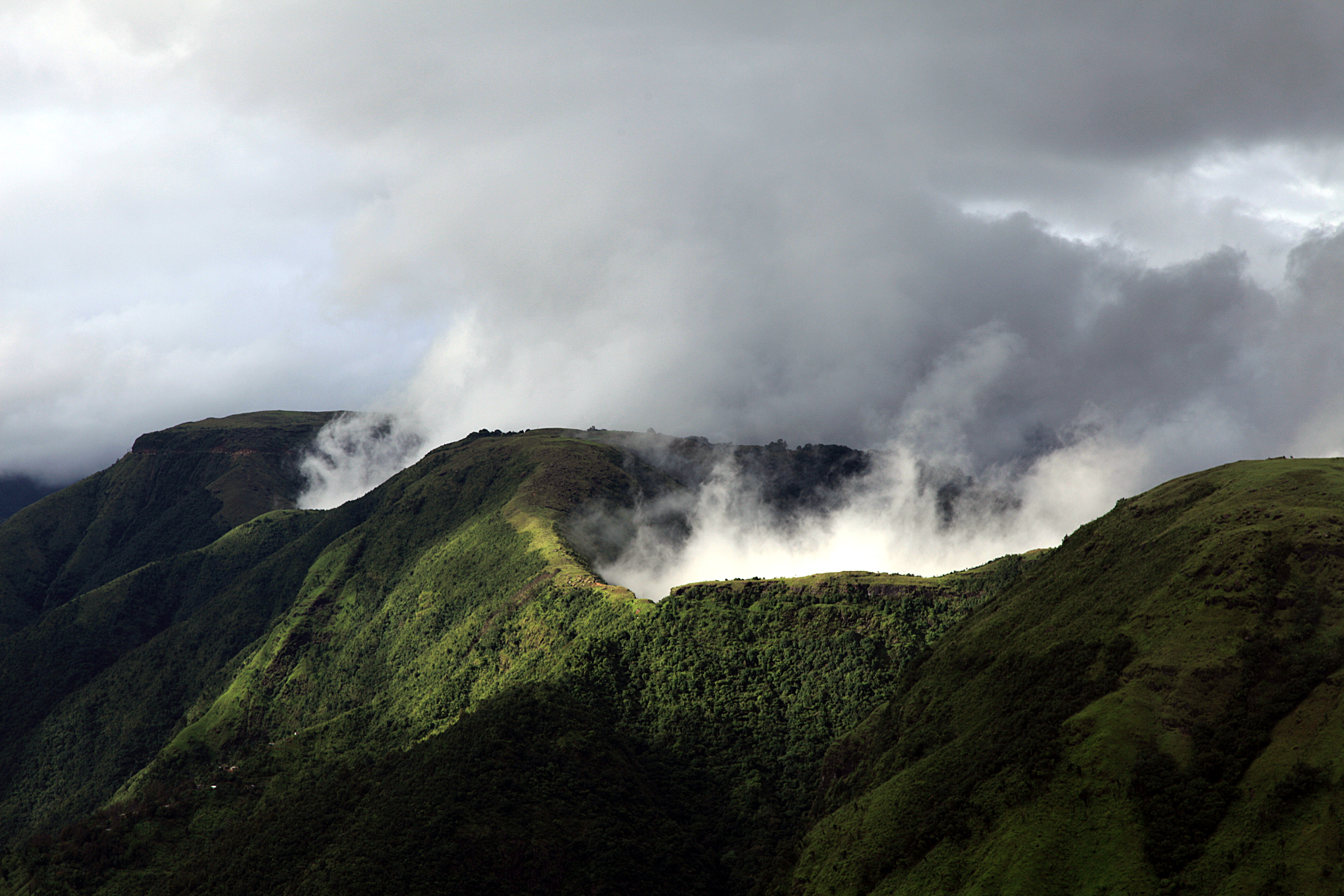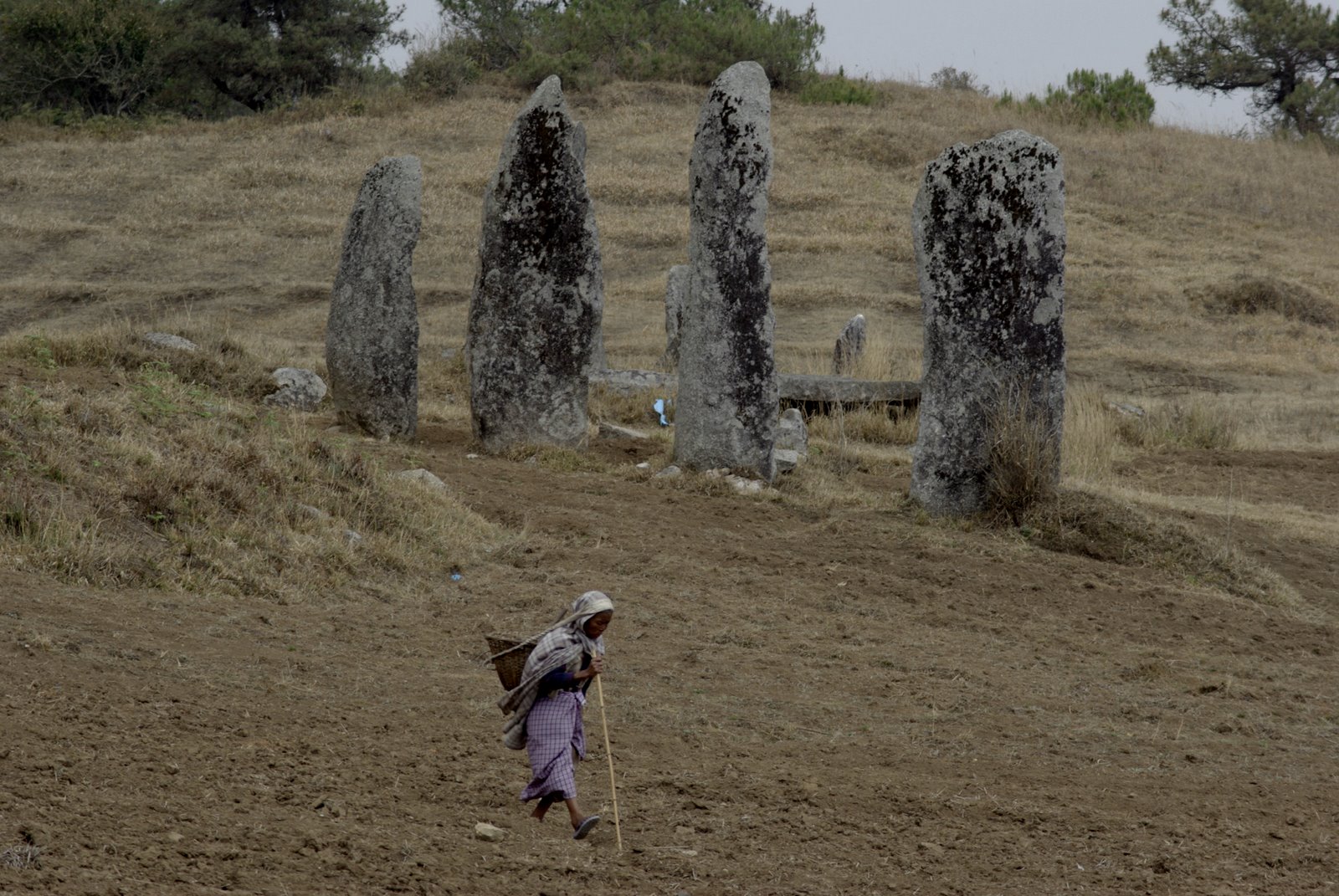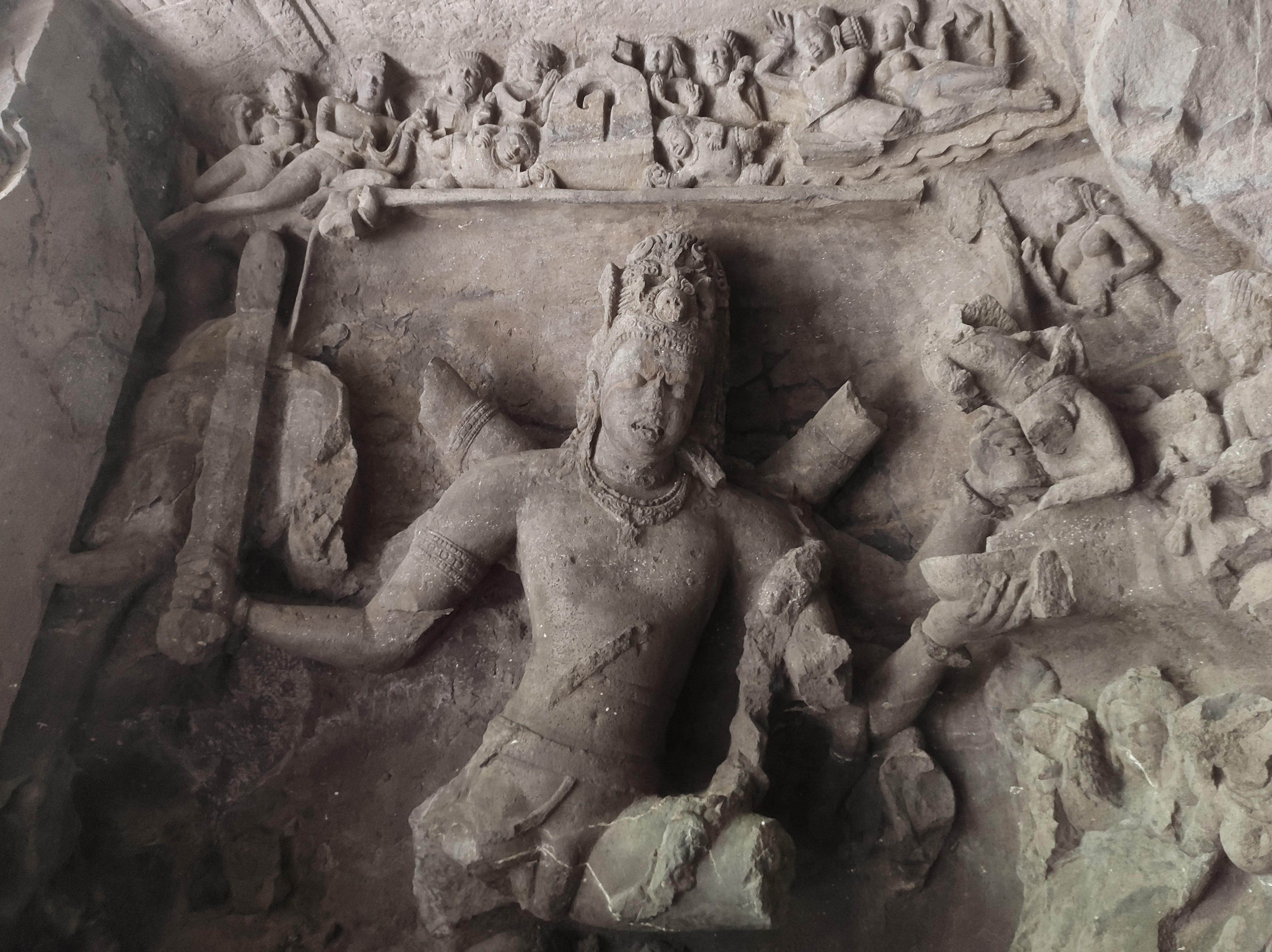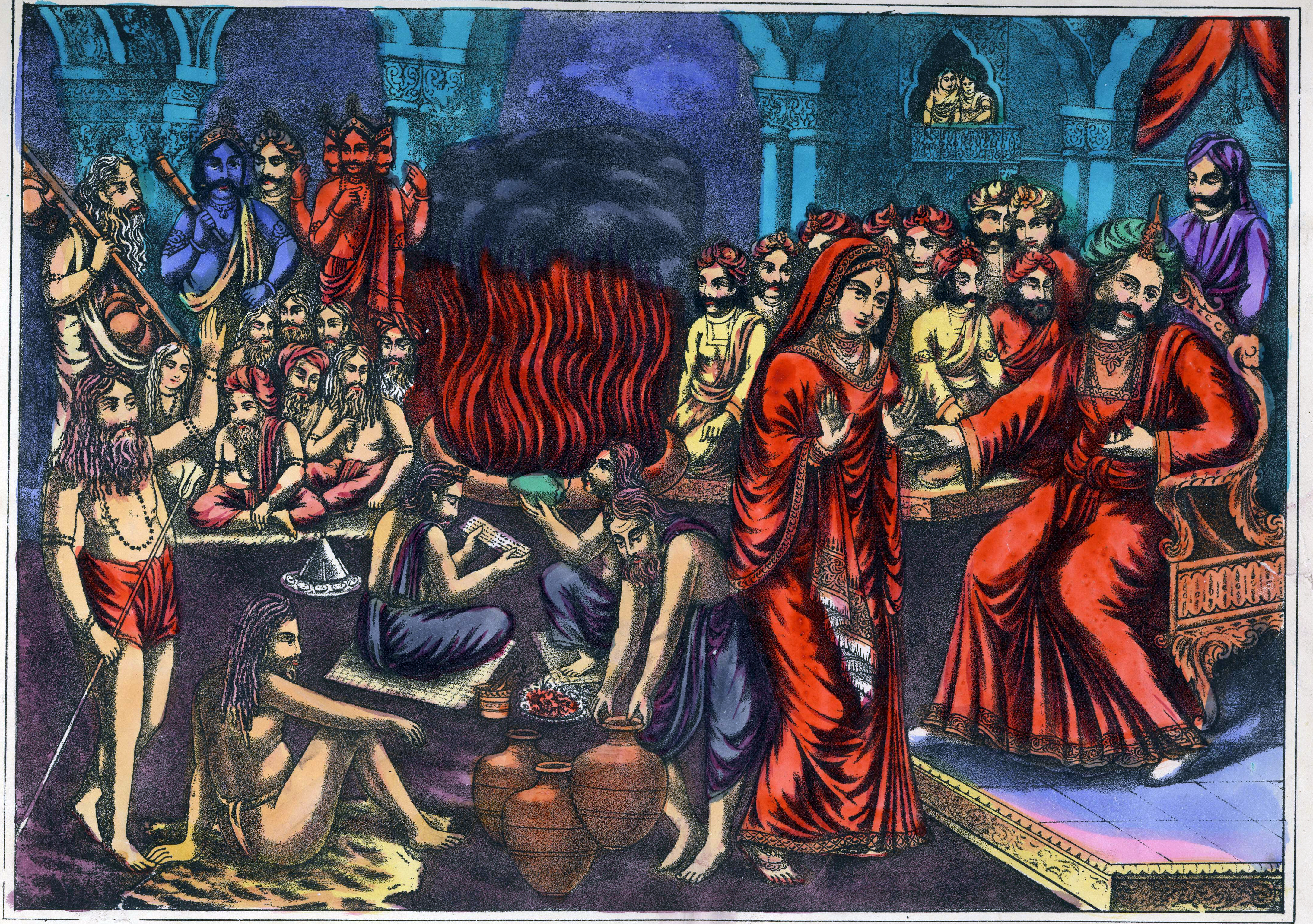|
Nartiang Durga Temple
Nartiang Durga Temple is a 600-year-old temple located in the West Jaintia Hills district of Meghalaya in northeastern India. It is one of the 51 Shakta pithas and is one of the holiest sites for devotees of the Shaktism sect of Hinduism. The Hindus in the Jaintia Hills of Meghalaya believes that this temple is the permanent abode of Goddess Durga. The temple draws a large number of pilgrims from all over the country on occasion of Durga Puja. The Shakti of Nartiang Devi shrine is worshipped as Jayanti and the Bhairava as Kamadishwar. Significance The Nartiang Devi Temple is believed to be a Shakta pithas, Shakta pitha, one of the most revered shrines of Shaktism as Shakta pithas are Holy abodes of Shakti, Parashakti. The Shakta pithas have originated from ''the mythology of Daksha yagna and Sati's self immolation'' Shiva carried the corpse of Sati (goddess), Sati Devi and 51 body parts of the corpse fell in the path He had wandered. Each temple has shrines for both Shakti a ... [...More Info...] [...Related Items...] OR: [Wikipedia] [Google] [Baidu] |
Meghalaya
Meghalaya (; "the abode of clouds") is a states and union territories of India, state in northeast India. Its capital is Shillong. Meghalaya was formed on 21 January 1972 by carving out two districts from the Assam: the United Khasi Hills and Jaintia Hills and the Garo Hills.History of Meghalaya State Government of India The estimated population of Meghalaya in 2014 was 3,211,474. Meghalaya covers an area of approximately 22,429 square kilometres, with a length-to-breadth ratio of about 3:1.Meghalaya IBEF, India (2013) The state is bound to the south by the Bangladeshi divisions of Mymensingh Division, Mymensingh and Sylhet Division, Sylhet, to the west by the Bangladeshi ... [...More Info...] [...Related Items...] OR: [Wikipedia] [Google] [Baidu] |
Shiva
Shiva (; , ), also known as Mahadeva (; , , Help:IPA/Sanskrit, [mɐɦaːd̪eːʋɐh]) and Hara, is one of the Hindu deities, principal deities of Hinduism. He is the God in Hinduism, Supreme Being in Shaivism, one of the major traditions within Hinduism. Shiva is known as ''The Destroyer'' within the Trimurti, the Hinduism, Hindu trinity which also includes Brahma and Vishnu. In the Shaivite tradition, Shiva is the Supreme Lord who creates, protects and transforms the universe. In the goddess-oriented Shaktism, Shakta tradition, the Supreme Goddess (Devi) is regarded as the energy and creative power (Shakti) and the equal complementary partner of Shiva. Shiva is one of the five equivalent deities in Panchayatana puja of the Smarta Tradition, Smarta tradition of Hinduism. Shiva has many aspects, benevolent as well as fearsome. In benevolent aspects, he is depicted as an Omniscience, omniscient yogi who lives an Asceticism#Hinduism, ascetic life on Kailasa as well as a house ... [...More Info...] [...Related Items...] OR: [Wikipedia] [Google] [Baidu] |
Kiren Rijiju
Kiren Rijiju (born 19 November 1971) is an Indian politician who is serving as the 28th Minister of Parliamentary Affairs and 7th Minister of Minority Affairs since 2024. He was the Cabinet Minister of Earth Sciences and Food Processing Industries in the Government of India from 2023 to June 2024 and a Member of Parliament in the Lok Sabha from Arunachal West since 2014 and from 2004 to 2009. Earlier, he served as the Minister of State for Home Affairs from 2014 to 2019, Minister of State for Minority Affairs from 2019 to 2021, Minister of State (Independent Charge) for Sports and Youth Affairs from 2019 to 2021 and the Law minister from 2021 to 2023. Early life Rijiju was born on 19 November 1971 to a Buddhist family in the Nakhu village near the Nafra town in the West Kameng district of Arunachal Pradesh. His father's name is Rinchin Kharu and his mother's name is Chirai Rijiju. His father was the first pro-tempore speaker of the first Arunachal Pradesh Legislative Ass ... [...More Info...] [...Related Items...] OR: [Wikipedia] [Google] [Baidu] |
Khasi-Jaintia Hills
The Khasi and Jaintia Hills are a mountainous region in India that was mainly part of Assam and Meghalaya. This area is now part of the present Indian constitutive state of Meghalaya (formerly part of Assam), which includes the present districts of East Jaintia Hills district, headquarter Khliehriat, West Jaintia Hills district, headquarter Jowai, East Khasi Hills district, headquarter Shillong, and West Khasi Hills district, headquarter Nongstoin. Jaintia Hills The Jaintia Hills are located further to the east from the Khasi Hills. The twelve Chiefs of the ''elaka'' (tribal province) of the ''Pnars'', a Khasi Sub-tribe are styled ''Dolloi'', and the land is called after them in Khasi: KA RI KHADAR DOLLOI ('Land of 12 Tribal Chiefs') - they are in Nartiang itself (see the Raja, uniquely also styled, as premier Chief: ''U Kongsong''), and in Amwi, Jowai, Lakadong, Mynso, Nongbah, Nongjngi, Nongphyllut, Nongtalang, Raliang, Shangpung, Sutnga (see below; th ... [...More Info...] [...Related Items...] OR: [Wikipedia] [Google] [Baidu] |
Khasi People
The Khasi people are an Austroasiatic languages, Austroasiatic Ethnicity, ethnic group of Meghalaya in north-eastern India with a significant population in the bordering state of Assam and in certain parts of Bangladesh. Khasi people form the majority of the population of the eastern part of Meghalaya, that is Khasi Hills, constituting 78.3% of the region's population, and is the state's largest community, with around 48% of the population of Meghalaya. They are among the few Austroasiatic languages, Austroasiatic-speaking peoples in South Asia. The Khasi tribe holds the distinction of being one of the few remaining tribes that have a matrilineal society. Under the Constitution of India, the Khasis have been granted the status of Scheduled Castes and Scheduled Tribes, Scheduled Tribe. Etymology History Khasi mythology Khasi mythology traces the tribe's original abode to ("The Seven Huts"). According to the Khasi mythology, (God, the Lord Master) had originally distribute ... [...More Info...] [...Related Items...] OR: [Wikipedia] [Google] [Baidu] |
Hinduism
Hinduism () is an Hypernymy and hyponymy, umbrella term for a range of Indian religions, Indian List of religions and spiritual traditions#Indian religions, religious and spiritual traditions (Sampradaya, ''sampradaya''s) that are unified by adherence to the concept of ''dharma'', a Ṛta, cosmic order maintained by its followers through rituals and righteous living, as expounded in the Vedas. The word ''Hindu'' is an exonym, and while Hinduism has been called the oldest religion in the world, it has also been described by the modern term ''Sanātana Dharma'' () emphasizing its eternal nature. ''Vaidika Dharma'' () and ''Arya dharma'' are historical endonyms for Hinduism. Hinduism entails diverse systems of thought, marked by a range of shared Glossary of Hinduism terms, concepts that discuss God in Hinduism, theology, Hindu mythology, mythology, among other topics in Hindu texts, textual sources. Hindu texts have been classified into Śruti () and Smṛti (). The major Hin ... [...More Info...] [...Related Items...] OR: [Wikipedia] [Google] [Baidu] |
Kalabhairava
Bhairava (, ), or Kāla Bhairava, is a Shaivism, Shaivite and Vajrayana, Vajrayāna deity worshipped by Hindu deities, Hindus and Buddhism, Buddhists. In Shaivism, he is a powerful manifestation, or avatar, of Shiva.Kramrisch, Stella (1994). ''The Presence of Śiva''. Princeton, NJ: Princeton University Press. p. 471. In the tradition of Kashmir Shaivism, Bhairava represents the Supreme Reality, synonymous to Para Brahman. Generally in Hinduism, Bhairava is also called Dandapāni ("[he who holds the] danda in [his] hand"), as he holds a rod or ''danda'' to punish sinners, and Svaśva, meaning, "he whose vehicle is a dog". In Vajrayana Buddhism, he is considered a Fierce deities, fierce emanation of boddhisatva Mañjuśrī, and also called Heruka, Vajrabhairava, Mahākāla and Yamantaka. Bhairava is worshipped throughout India, Nepal, Indonesia, Sri Lanka, and Japan, as well as in Tibetan Buddhism. Etymology Bhairava originates from the word ''bhīru'', which means "fearso ... [...More Info...] [...Related Items...] OR: [Wikipedia] [Google] [Baidu] |
Sati (goddess)
Sati (, , , ), also known as Dakshayani (Sanskrit: , IAST: ''Dākṣāyaṇī'', lit. 'daughter of Daksha'), is the Hindu goddess of marital felicity and longevity, and is worshipped as an aspect of the mother goddess Adi Parashakti, Shakti. Sati was the first wife of Shiva, the other being Parvati, who was Sati's reincarnation after her death. The earliest mentions of Sati are found in the time of the Ramayana and the Mahabharata, but details of her story appear in the Puranas. Legends describe Sati as the favourite child of Daksha, who marries Shiva against her father's wishes. Later, when Daksha organises a yajna (fire-sacrifice) in which he doesn't invite her and her husband, Sati goes to attend it, only to be humiliated by her father. She then immolates herself to protest against him, and uphold the honour of her husband. In Hinduism, both Sati and Parvati, successively play the role of bringing Shiva away from ascetic isolation into creative participation with the world. S ... [...More Info...] [...Related Items...] OR: [Wikipedia] [Google] [Baidu] |
Dakshayani
Sati (, , , ), also known as Dakshayani (Sanskrit: , IAST: ''Dākṣāyaṇī'', lit. 'daughter of Daksha'), is the Hindu goddess of marital felicity and longevity, and is worshipped as an aspect of the mother goddess Shakti. Sati was the first wife of Shiva, the other being Parvati, who was Sati's reincarnation after her death. The earliest mentions of Sati are found in the time of the Ramayana and the Mahabharata, but details of her story appear in the Puranas. Legends describe Sati as the favourite child of Daksha, who marries Shiva against her father's wishes. Later, when Daksha organises a yajna (fire-sacrifice) in which he doesn't invite her and her husband, Sati goes to attend it, only to be humiliated by her father. She then immolates herself to protest against him, and uphold the honour of her husband. In Hinduism, both Sati and Parvati, successively play the role of bringing Shiva away from ascetic isolation into creative participation with the world. Sati's story pla ... [...More Info...] [...Related Items...] OR: [Wikipedia] [Google] [Baidu] |
West Jaintia Hills District
West Jaintia Hills (Pron: ˈʤeɪnˌtɪə) is an administrative District in the state of Meghalaya in India. The united district (Jaintia Hills District) was created on 22 February 1972 and occupied an area of 3819 km2. It had a population of 272,185 (as of 2011). The district is part of the Meghalaya subtropical forests eco-region. With the bifurcation of the erstwhile Jaintia Hills District into East and West Jaintia Hills Districts, West Jaintia Hills District came into existence on 31 July 2012 with its headquarters at Jowai. Jowai is the host of all the heads of important governmental offices and establishments, educational institutions, hospitals, banking institutions, etc. Geography The total area of the district is 1693 km2. The district comprises one Civil Sub-Division Viz. Amlarem Civil Sub-Division and four Community and Rural Development (C&RD) Blocks viz. Amlarem C&RD Block, Laskein C&RD Block , Thadlaskein C&RD Block and Namdong C&RD Block with the following ... [...More Info...] [...Related Items...] OR: [Wikipedia] [Google] [Baidu] |
The Times Of India
''The Times of India'' (''TOI'') is an Indian English-language daily newspaper and digital news media owned and managed by the Times Group. It is the List of newspapers in India by circulation, third-largest newspaper in India by circulation and List of newspapers by circulation, largest selling English-language daily in the world. It is the oldest English-language newspaper in India, and the second-oldest Indian newspaper still in circulation, with its first edition published in 1838. It is nicknamed as "The Old Lady of Bori Bunder", and is a newspaper of record. Near the beginning of the 20th century, Lord Curzon, the Viceroy of India, called ''TOI'' "the leading paper in Asia". In 1991, the BBC ranked ''TOI'' among the world's six best newspapers. It is owned and published by Bennett, Coleman & Co. Ltd. (BCCL), which is owned by the Sahu Jain family. In the Brand Trust Report India study 2019, ''TOI'' was rated as the most trusted English newspaper in India. In a 2021 surve ... [...More Info...] [...Related Items...] OR: [Wikipedia] [Google] [Baidu] |










